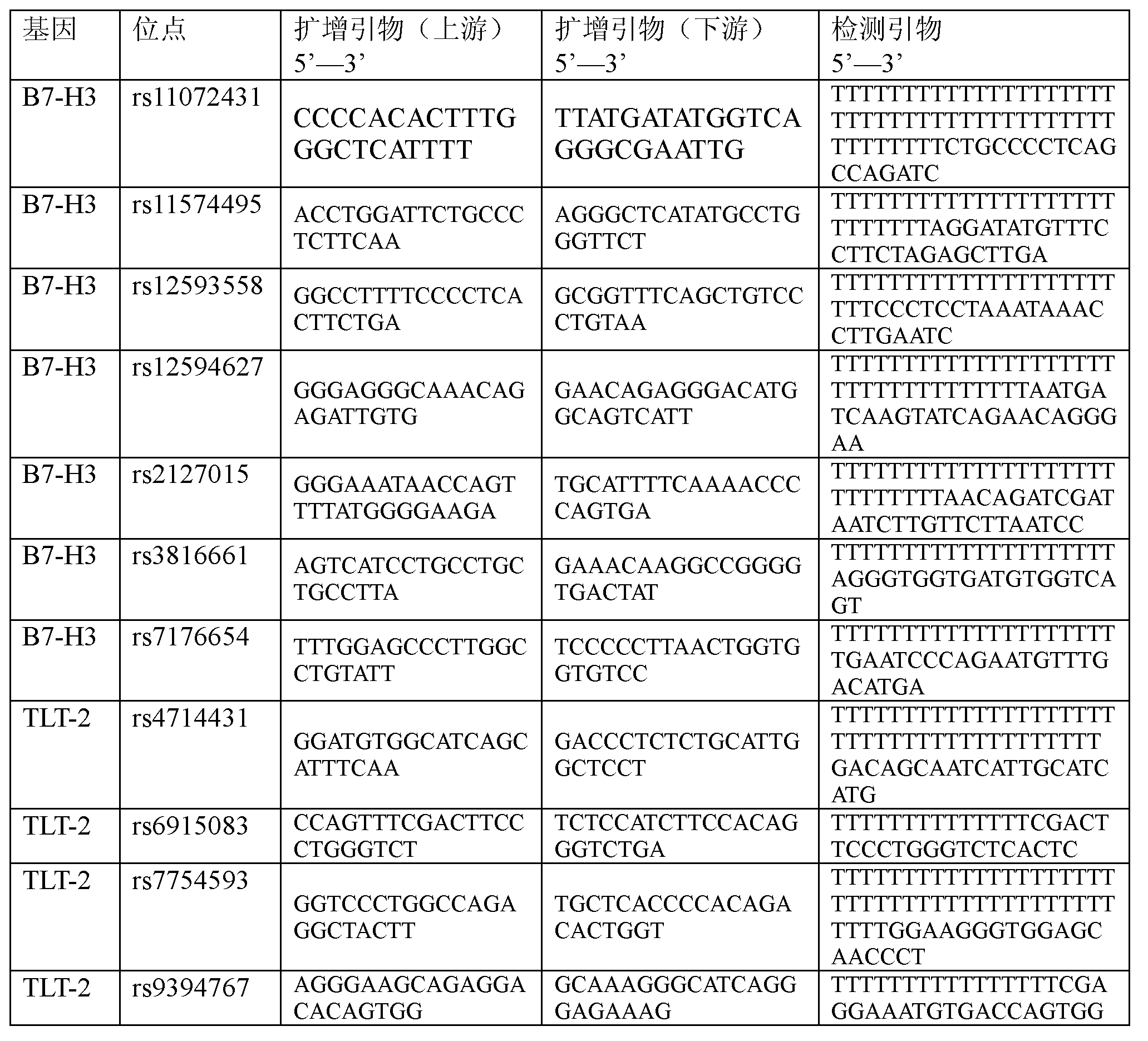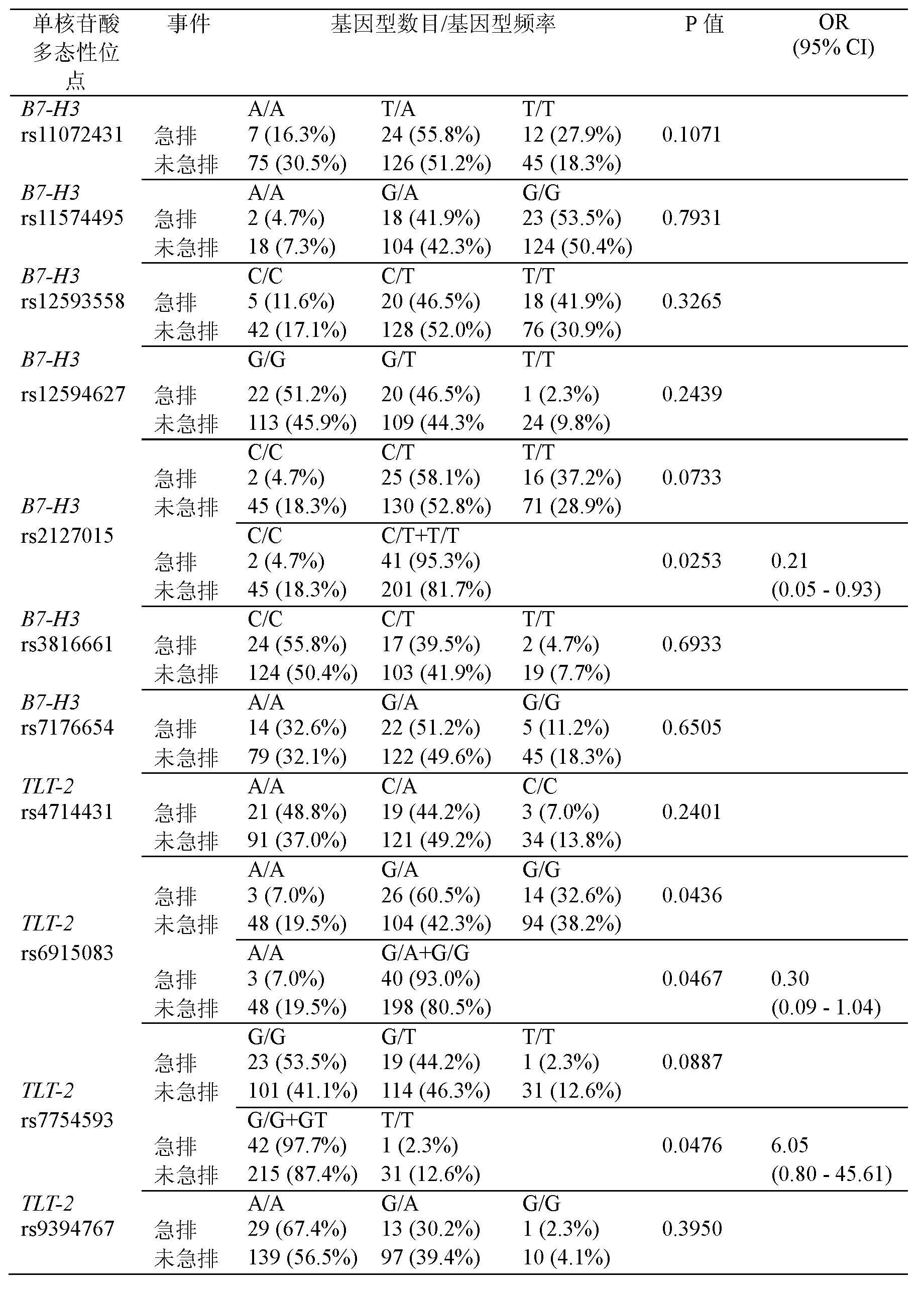Primer and method for predicating acute rejection occurrence risk in recipient after liver transplantation
A technology for acute rejection and liver transplantation, applied in the field of liver transplantation monitoring, can solve the problem of not further strengthening the identification of the risk of acute rejection of transplant recipients, and achieve good specific results
- Summary
- Abstract
- Description
- Claims
- Application Information
AI Technical Summary
Problems solved by technology
Method used
Image
Examples
Embodiment Construction
[0037] 1. Crowd selection
[0038] A total of 388 patients were enrolled, including 341 males and 47 females, aged 21 to 69 years. A total of 299 patients were enrolled in the retrospective study, who underwent liver transplantation from 2006 to 2009. A total of 89 recipients were enrolled in the prospective study, who underwent liver transplantation between 2010 and 2011. The etiologies of the enrolled recipients included hepatitis B infection, hepatocellular carcinoma, severe hepatitis, and decompensated cirrhosis.
[0039] 2. Immunosuppressive regimen
[0040] The plasma concentration of tacrolimus should be controlled at 10-12 ng / mL in the first month after transplantation, 8-10 ng / mL in other months of the first year, and 5-8 ng / mL thereafter. During this period, the daily dosage of mycophenolate mofetil was 1-2g. Corticosteroids were administered with 1,000 mg of prednisolone on the day of surgery, followed by 240 mg of methylprednisolone on the first postoperative d...
PUM
 Login to View More
Login to View More Abstract
Description
Claims
Application Information
 Login to View More
Login to View More - R&D
- Intellectual Property
- Life Sciences
- Materials
- Tech Scout
- Unparalleled Data Quality
- Higher Quality Content
- 60% Fewer Hallucinations
Browse by: Latest US Patents, China's latest patents, Technical Efficacy Thesaurus, Application Domain, Technology Topic, Popular Technical Reports.
© 2025 PatSnap. All rights reserved.Legal|Privacy policy|Modern Slavery Act Transparency Statement|Sitemap|About US| Contact US: help@patsnap.com



